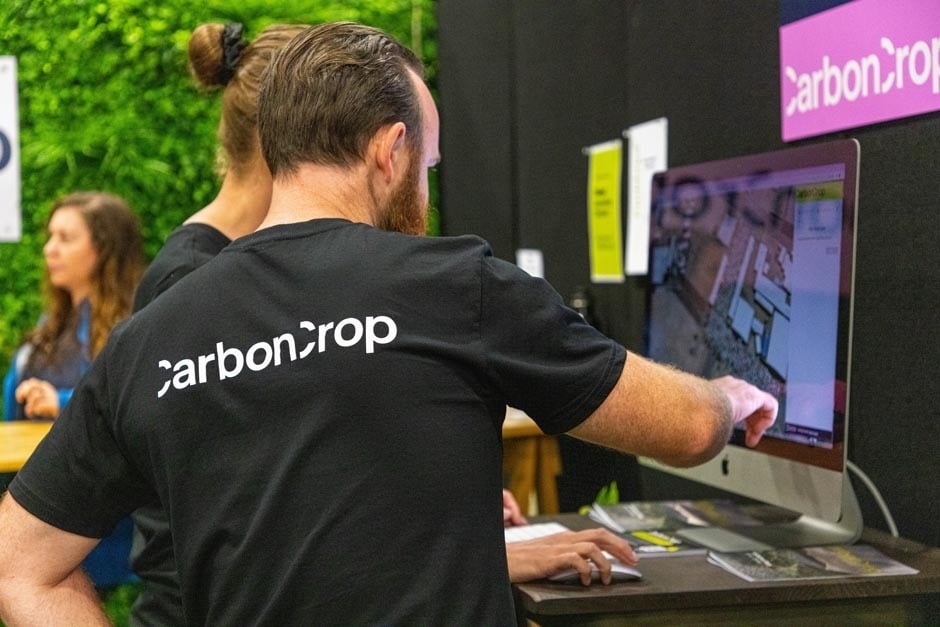
In an era where offsetting carbon has quickly become one of the main solutions for lowering climate impact across the world, New Zealand’s very-own CarbonCrop is doing so with the advanced technology of artificial intelligence (AI).
Only three years into their journey, CarbonCrop have been using AI before it became the hottest keyword of 2023 to help landholders across New Zealand pull around a billion tonnes of CO2 from the atmosphere.
A billion tonnes of CO2 is the equivalent of over 900,000 Olympic-sized swimming pools’ worth.
CarbonCrop’s innovative use of technology sets it apart from many other carbon offsetting solutions.
“Obviously there’s lots of environmental problems that you don’t need AI to solve, but where you do, it was like this could be an opportunity, we could have a bigger impact,” says CarbonCrop CTO and Co-Founder, Nick Butcher.
Butcher and his team at CarbonCrop saw that the technology could be used to take pictures of trees to tell how much carbon is in them.
But how does the company use this data to address the problem of carbon emissions?
“Quite quickly we discovered that the opportunity is that, especially in New Zealand, there’s incentive markets that exist for carbon and trees like the government and other parties will pay you to restore forest,” says Butcher.

“Actually, many people who had forests that they were restoring weren’t able to access those incentives because it was all too complicated. So, we were like, this sounds like a filter automation, AI problem.”
Using their technology, the team at CarbonCrop are making it easier for landholders to access the incentives to reduce carbon emissions by paying and providing more resources into the restoration of forests.
Read more: Is there space for innovation in AI?
Through this, the focus is put on native forest restoration, the class of forest that is most neglected under the existing schemes, giving landholders the opportunity to use their land as a form of carbon sink.
“That was really where we decided to focus was how can we make carbon markets more effective at supporting the restoration of native forest,” adds Butcher.
Technology developed by the Nelson Artificial Intelligence Institute, AI has become foundational to their entire approach.
Now with hundreds of customers and a product that works, CarbonCrop has been able to deliver tens of millions of dollars of carbon credits for restoration.

AI is still a developing model with room for improvement, and Butcher says they are continuing to innovate so that one day, they can open their platform up not just to landholders, but to serve everyone.
“Until now, we’ve basically been building a solution for landholders, and it’s only really once we got that in place and took a step back that we realized that really, we’ve built a solution for everybody working in the forest restoration space,” he says.
“We’re in the process now of making it more broadly available to more people in the supply side, so more people working in forest restoration, which we hope will have a big impact and support more forest restoration.”
Over the next few years, Butcher plans for CarbonCrop to grow from supporting the New Zealand community to making an impact globally, with big brands such as Unilever and Nestlé in its sights.




